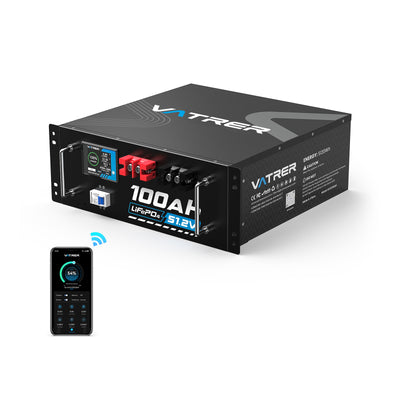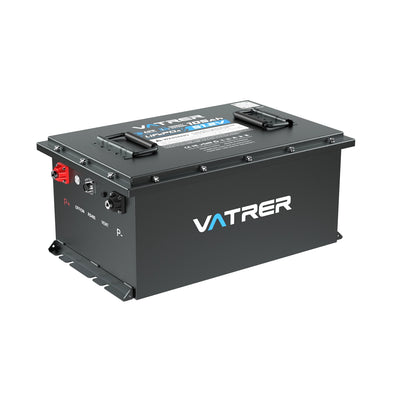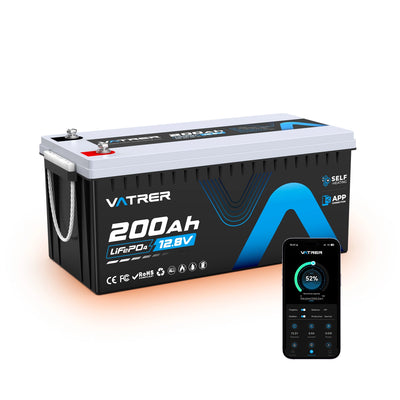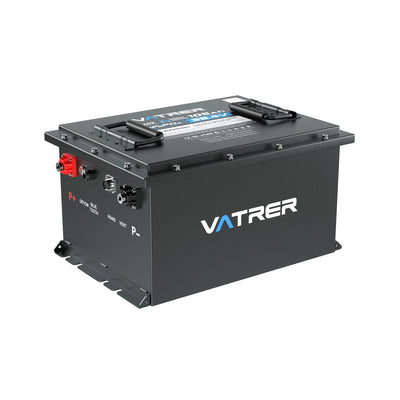
How Much Do Golf Cart Batteries Weigh
If you’ve ever lifted a heavy battery and thought, “How much does this actually weigh?”, you’re already considering one of the key aspects that matters. For anyone operating a golf cart, knowing the golf cart battery weight isn’t just a matter of curiosity—it’s an essential factor influencing performance, upkeep, and overall running costs.
Whether you’re organising transport, checking that a replacement fits correctly, or comparing different battery types, the total weight of your golf cart’s energy source plays a significant role in its daily operation.
This guide explains the main categories of batteries used in golf carts, their average weights, how weight affects driving performance, and what you should evaluate when upgrading—particularly when moving to a lithium-based system.

Main Insights
- A single lead-acid battery for a golf cart usually weighs somewhere between 50 and 80 lbs.
- Heavier batteries may slow acceleration, reduce driving range, add strain to vehicle parts, and make installation more demanding.
- Changing from lead-acid to lithium-ion batteries can cut overall weight by about half to two-thirds, improving handling and lowering long-term costs.
- When purchasing, always verify the type, amp-hour (Ah) capacity, size, and compatibility—not only the overall mass.
Tip: Always make sure the battery matches your cart model in voltage, tray dimensions, and terminal configuration before purchase.
Why It’s Important to Understand Golf Cart Battery Weight
The battery is not just an energy supply—it’s one of the heaviest single parts of your cart. Its total weight influences your cart’s acceleration, travel distance on a full charge, and its ability to handle inclines or uneven surfaces.
Being aware of a golf cart battery’s weight is also practical: it helps determine whether you can lift or change it yourself safely, what charger or rack fits best, and how much stress your suspension must manage over time.
Types of Golf Cart Batteries and How Weight Affects Them
Golf cart batteries differ widely in structure and materials, and these variations strongly influence how much they weigh and how efficiently they power the vehicle. Each battery type relies on distinct internal components that determine its weight, output, and long-term reliability.
Lead-Acid Batteries
This is the traditional type found in most carts, using solid lead plates and a liquid sulphuric acid electrolyte. These dense materials make them among the heaviest options, generally between 60 and 80 lbs each.
- Effect on driving: The extra weight stabilises the cart and gives firm traction, particularly on slopes, though it also reduces acceleration and makes manual movement harder.
- Maintenance: Standard flooded lead-acid batteries need topping up with water and regular cleaning of terminals, while sealed AGM or gel versions lessen, but don’t fully remove, maintenance needs.
Tip: A full 48-volt lead-acid pack can exceed 400 lbs—ensure the suspension can bear the load and expect a shorter distance per charge.
AGM (Absorbent Glass Mat) Lead-Acid Batteries
AGM batteries are sealed lead-acid models where the acid is held in a glass mat. They are a bit lighter than flooded batteries (roughly 55–70 lbs each) but still rely on lead as their core material.
- Performance impact: They handle vibration better and suit rougher terrain, though their weight still limits the efficiency gains.
- Maintenance benefit: They are spill-proof and don’t need water refills, yet their lifespan is still shorter than that of lithium batteries.
Lithium-Ion Batteries (LiFePO4)
Modern lithium golf cart batteries are built with lightweight lithium-iron-phosphate cells instead of lead plates, reducing their mass to around a third of a lead-acid equivalent—typically 20–35 lbs each.
- Driving experience: Less weight improves speed, range, and reduces wear on suspension and tyres.
- Efficiency: Higher energy density means more usable power per kilogram, allowing for strong output without extra bulk.
- Safety: Integrated BMS (Battery Management System) protects against overcharge and thermal issues, while the chemistry itself is stable and non-volatile.
- Maintenance: No refilling, no corrosion—just thousands of cycles (up to 4,000) with minimal loss of performance.
Typical Weight Range for Single Golf Cart Batteries
The table below shows typical weights for various voltages and battery chemistries for easy comparison:
| Voltage & Type | Common Weight Range | Remarks |
|---|---|---|
| 6V Lead-Acid | ≈58–68 lbs (26–31 kg) | Standard deep-cycle model |
| 8V Lead-Acid | ≈60–77 lbs (27–35 kg) | Heavier build than 6V |
| 12V Lead-Acid | ≈55–88+ lbs (25–40 kg) | Higher capacity models |
| Lithium-Ion (all voltages) | ≈20–35 lbs (9–16 kg) | Lightest at equal capacity |
The overall golf cart battery weight depends heavily on its chemistry and voltage combination.
Tip: Batteries of equal voltage can vary greatly in mass—always review Ah rating, case type, and brand specifications.
How Battery Weight Influences Golf Cart Performance
- Acceleration & Speed: A heavier setup makes the motor work harder, which slows acceleration and reduces top speed, especially uphill.
- Driving Range: More weight means greater energy consumption, reducing travel distance per charge.
- Steering & Control: Heavy batteries can raise the cart’s centre of gravity, making steering slower. Slight extra weight may improve traction but can reduce manoeuvrability.
- Component Wear: Extra load accelerates wear on axles, bearings, suspension, and tyres. Lighter lithium units ease this strain, extending component life.
What Defines Golf Cart Battery Weight
- Chemistry: Traditional lead batteries use dense metals, while lithium cells rely on lighter compounds, explaining the big weight difference.
- Capacity (Ah): More amp-hours mean more cell material, and thus more weight—even if voltage stays the same.
- Voltage & Layout: Higher system voltages or fewer, larger batteries can reduce total pack mass—for example, a single 48V lithium battery may replace multiple 6V lead-acid units.
- Housing & Design: Casings, brackets, and handles add mass. Metal cases are heavier than polymer ones; ruggedised versions add extra reinforcement.
- Aging & Sulfation: As lead plates corrode and swell over time, lead-acid batteries may even gain weight slightly—something not seen with lithium cells, which remain consistent through their life.
Switching to a Lithium Golf Cart Battery
When upgrading from lead-acid to lithium, keep the following in mind:
Voltage alignment: The lithium pack must match your system voltage (36V, 48V, etc.).
- Fit and installation: Even though lithium batteries are smaller, ensure they’re secured properly in the tray.
- Connections: Confirm that terminal layout and wiring match your cart’s setup.
- Charger requirements: Lithium batteries generally require a compatible charger; using a lead-acid charger can damage them.
- Weight benefits: A lighter system—like a Vatrer lithium pack—reduces mechanical wear and improves performance.
- Ease of maintenance: Most lithium systems are plug-and-play, feature built-in BMS protection, and require virtually no maintenance.
By upgrading to a trusted lithium solution such as the Vatrer lithium battery range, you gain a lighter build, longer lifespan, and minimal maintenance.
Tip: Seek professional installation advice to guarantee safety and compatibility.
Conclusion
From battery chemistry (lead-acid versus lithium-ion) to configuration (6V, 8V, or 12V) and capacity (Ah rating), every element affects the golf cart battery weight and overall performance.
Choosing a dependable lithium golf cart battery—for instance, one from Vatrer—means fewer units, less weight, lower maintenance, and smoother handling.
Before committing, check voltage, dimensions, Ah capacity, and wiring details. Doing so ensures not just compatibility but a better driving experience.
Ready for an upgrade? Explore the Vatrer lithium golf cart battery conversion kit to experience the difference in weight, handling, and reliability yourself.
FAQs
How can I know if my golf cart battery pack is too heavy for the vehicle?
If the cart feels slow to respond, climbs poorly on slopes, or drains charge unusually fast, your existing battery configuration might exceed the cart’s suspension and motor capacity.
Excessive weight accelerates wear on tyres, bearings, and suspension. Check your manufacturer’s maximum recommended battery weight and compare it with your installed setup. If it’s higher, switching to a lithium golf cart battery will likely solve the issue and enhance efficiency.
Does battery weight influence charging duration or energy use?
Indirectly, yes. Heavier lead-acid batteries often have higher internal resistance, converting more power into heat and lengthening charge time. This increases both charging duration and electricity consumption.
Lithium-ion batteries, being lighter and more efficient, charge faster and waste less energy thanks to lower resistance and steady voltage output—often saving several hours per charging cycle.
Are there safety risks when handling heavy golf cart batteries?
Yes. Lead-acid batteries typically weigh 60–80 lbs and contain corrosive acid. Always use lifting straps or a trolley, wear gloves and eye protection, and disconnect power before removal. Never attempt to lift alone. Lithium batteries are far lighter and safer but still require careful installation to avoid short circuits or terminal contact.
Tip: If you’re not confident in lifting safely, hire a professional technician for removal and fitting.
How does battery weight affect driving distance in real use?
A heavier pack adds total vehicle mass, forcing the motor to draw more power and reducing overall range—particularly on hilly routes or with extra passengers. Replacing a 480-lb lead-acid set with a 130-lb lithium pack can increase range by 20–30% while improving braking recovery efficiency.
Is there an optimal battery weight for my golf cart model?
There’s no single standard figure—it depends on the make, use, and environment. Generally, 36V carts perform best under 400 lbs total, while 48V versions under 450 lbs. Lightweight lithium systems usually operate efficiently around 120–150 lbs in total. Always check your manufacturer’s advised limits.
Do temperature and weather influence battery weight or output?
Temperature doesn’t alter physical weight but affects energy performance. Lead-acid batteries lose much of their available capacity in cold conditions, feeling “heavier” in power output. Lithium packs deliver steadier performance across temperature ranges, especially those equipped with built-in low-temperature protection or self-heating features.
What are the long-term advantages of using a lighter battery system?
Lighter batteries reduce mechanical stress on your golf cart’s frame and components—resulting in fewer alignment issues, slower tyre wear, and reduced repair costs. Lithium batteries further eliminate fluid checks, corrosion cleaning, and terminal maintenance. Over time, these savings often outweigh the higher upfront price.
Share



















































